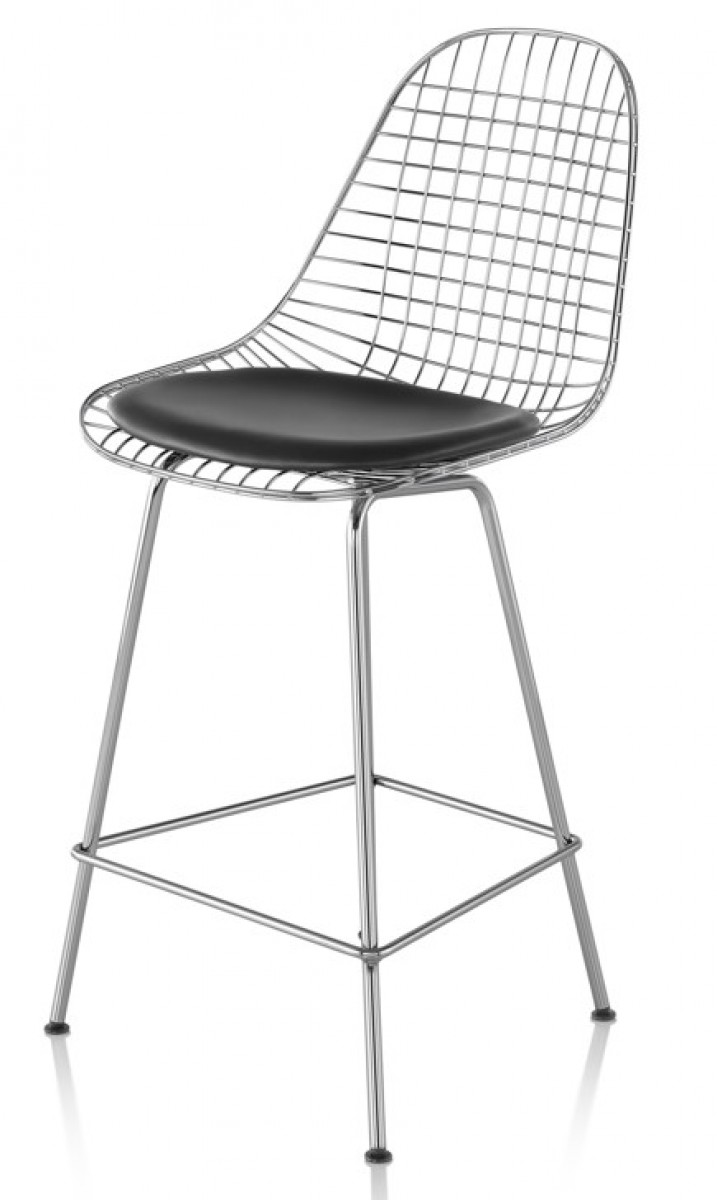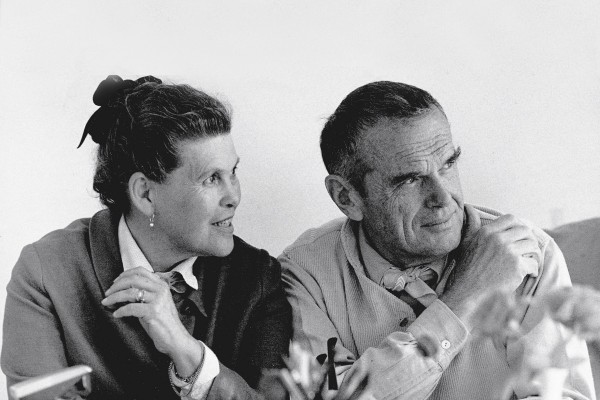


It’s in that spirit that the Eames Wire Chair, itself a result of experiments with bent and welded wire during the 1950s, has been introduced as a stool. A light, airy form, the Eames Wire Stool is available in a choice of finishes, bar- or counter-heights, and with optional seat pad or two-piece leather “bikini” pad.
Eames Wire Stool–Counter Height - Upholstered Seat and Wire Back
-
For Order
Charles and Ray Eames
Charles Eames was born in 1907. After attending Washington University, he began working in an architectural office. In 1930, Charles started his own architectural office. Ray Kaiser Eames was born in 1912. She studied painting in NYC before moving to Cranbrook Academy where she met and assisted Charles and Eero Saarinen for the Museum of Modern Art’s Organic Furniture Competition. They married in 1941 and moved to California. Their own home design is considered one of the world's most important post-war residences. They are among the most important American designers of the 20th century.Learn more about
Herman Miller


